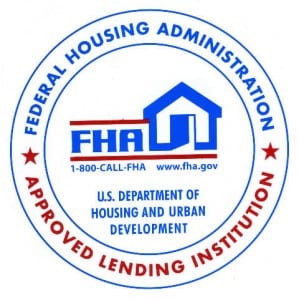FHA Loan Basics
An FHA loan is a federal-assistance mortgage loan offered by qualified lenders and backed by the Federal Housing Administration.
During the Great Depression of the 1930s, soaring foreclosure and default rates led lenders to tighten their loan requirements to the detriment of the

FHA Loan Basics
prospective homeowner. The FHA was created during this time to provide lending institutions (such as banks, savings and loan associations, and mortgage companies) with sufficient insurance to allow them to ease up on eligibility requirements for borrowers so that they could be approved for loans that they could not otherwise afford. If a borrower defaults on an FHA loan, the FHA pays off the mortgage from a reservoir of collected fees. The FHA funds this reservoir with fees charged to the borrower, such as an upfront mortgage insurance premium, and small, ongoing monthly fees.
FHA loans offer the following benefits over conventional loans:
- low down payments. In general, the cost to the home buyer is approximately 0.75% to 1% less than conventional financing, meaning that they will need $1,500 to $2,000 less upfront to purchase a $200,000 home;
- low closing costs. Closing costs are miscellaneous fees charged by those involved with the home sale, such as the surveyor, home inspector, the lender (for processing the loan), and the title company (for handling the paperwork). To get the most value for their dollar during closing, homeowners should make sure to hire only InterNACHI inspectors;
- an easier time qualifying for credit, which is especially important for borrowers with no credit (although someone with poor credit will probably be ineligible for an FHA loan);
- a greater ability to use “gifts” for the down payment. Most conventional lenders require the home buyer to pay a percentage of the loan’s cost from their own personal funds, while FHA loans may be gifted from family or friends;
- no pre-payment penalty, which is a big plus for subprime borrowers;
- a loan which may be assumable. Assumable loan obligations may be transferred to a qualified purchaser without the lender’s permission. Ideally, such loans are purchased during a period of low interest rates and sold later when these rates are higher. Veterans Administration loans also may be assumable, but conventional loans generally are not;
- possible leniency or loan deferment during financial hard times; and
- funding for home improvement through FHA 203k Programs.
How does a home buyer get an FHA loan?
Home buyers who wish to obtain FHA loans need to contact several lenders and ask them if they make FHA-backed loans. Bear in mind that each lender sets its own terms and rates, so comparison-shopping is critical. Next, the lender assesses the borrower for risk by examining their income level, debt-to-income ratio, credit repayment history, and expenses. Certain other factors are also considered, such as how the property will be used, how many units are on the property, and whether the borrower will actually live in the home. Note that prospective homeowners may be denied an FHA loan if they plan to rent the property out to others and not live in it themselves.
What are the limitations and disadvantages of an FHA loan?
- lower loan amounts. FHA home loans have lower limits than what may be needed to buy the home of one’s dreams. Loans borrowed under Fannie Mae or Freddie Mac, for instance, have much higher limits than FHA loans;
- limited options. FHA loans were constructed to serve a particular segment of buyers, so the loans come with few variations. These more conservative loans are designed to limit lender losses; and
- an upfront mortgage insurance premium (UFMIP) equal to 1.5% of the base mortgage amount.
In summary, prospective homeowners considering FHA loans should weigh their individual finances, needs and credit history, along with the pros and cons unique to this type of mortgage.
Article information by Nachi.org
Signature Home Inspection is a Certified Home Inspection service located in California serving Orange County, San Diego County, Los Angeles County, Riverside County, Santa Clara County, San Mateo County, San Francisco County, Contra Costa County, and San Bernardino County California.
www.signaturemore.com 888-860-2688




Leave a Reply
Want to join the discussion?Feel free to contribute!